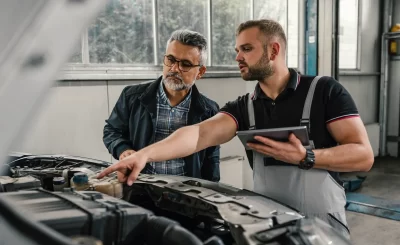Imagine this: your car won’t start on a Monday morning. The garage is 15 miles away. Your boss is texting. Stress levels? Through the roof. Enter mobile auto repair—the mechanic comes to you, tools in tow. No towing, no waiting rooms, no lost time. It’s like Uber, but for your car’s health. And honestly? It’s changing the game.
Why Mobile Auto Repair Is Exploding in Popularity
Let’s rewind a decade. Mobile mechanics existed, sure, but they were niche. Today? Demand has skyrocketed. Here’s why:
- Time poverty: People are busier than ever. A 2023 survey found 68% of drivers delay repairs because they “can’t find the time.” Mobile services erase that excuse.
- Remote work culture: With fewer commutes, cars sit idle longer. Neglected maintenance leads to more breakdowns—often at home.
- Tech-enabled convenience: Apps like Wrench and YourMechanic let you book repairs as easily as ordering takeout.
That said, it’s not just about convenience. The benefits run deeper.
Top Benefits of Mobile Auto Repair Services
1. No More Towing Headaches
Dead battery? Flat tire? Traditional repair means calling a tow truck—which costs $75-$125 on average. Mobile mechanics diagnose and fix onsite, saving you cash and hassle. One customer in Austin told me, “My alternator died in a grocery store lot. The mobile guy replaced it while I shopped. Total lifesaver.”
2. Transparent Pricing (Usually)
Ever gotten a repair bill with mysterious “shop fees”? Mobile services often quote upfront via apps. No overhead means fewer surprise charges. Pro tip: Always ask if travel fees apply—some charge by mileage.
3. Personalized Service
Smaller operations mean mechanics remember your car’s history. One Denver-based mobile tech keeps digital logs of each client’s oil changes, tire rotations, even wiper blade replacements. Try getting that at a franchise shop.
4. Ideal for Minor Repairs
Not every issue needs a lift. Mobile services excel at:
- Oil changes
- Brake pad swaps
- Battery replacements
- Diagnostic scans
Complex jobs (transmission rebuilds, major collisions) still require garages. But for routine stuff? Pure efficiency.
Potential Drawbacks to Consider
Nothing’s perfect. Mobile repair has limits:
- Weather woes: A mechanic can’t replace your struts in a thunderstorm.
- Tool constraints: Some jobs need heavy equipment only found in shops.
- Scheduling delays: High-demand periods may mean longer wait times.
But for many, the trade-offs are worth it.
How to Choose a Reliable Mobile Mechanic
Not all services are equal. Follow these steps:
- Check certifications: ASE or manufacturer credentials are a must.
- Read reviews—especially ones mentioning punctuality.
- Ask about parts: Do they use OEM or aftermarket? Know the difference.
- Verify insurance: Accidents happen. Ensure they’re covered.
The Future: Where Mobile Repair Is Headed
Electric vehicles (EVs) are the next frontier. Mobile techs are already training in battery diagnostics and charger installations. Some companies even offer “EV health checkups” at home—think of it as a physical for your Tesla.
And with AI diagnostics tools shrinking to pocket size? The possibilities are wild. Imagine a mechanic scanning your engine with a smartphone, then 3D-printing a replacement part in their van. It’s closer than you think.
So here’s the takeaway: mobile auto repair isn’t just a trend. It’s a response to how we live now—fast, fluid, and allergic to inconvenience. Your car gets fixed. You reclaim hours. And honestly? That’s progress you can measure in more than miles.











